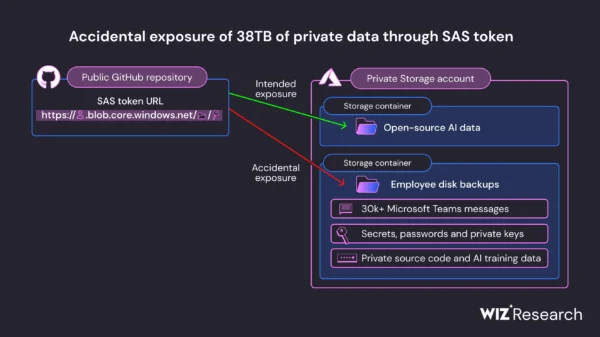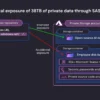In recent years, the rapid advancement and integration of artificial intelligence (AI) into various sectors have not only brought about a revolution in efficiency and capability, but have also introduced a new frontier in cybersecurity challenges. This evolving threat landscape shaped by AI highlights the need for robust countermeasures and awareness as we get used to this newly complex and rapidly changing domain.
AI-Powered Attack Vectors: The Rise of ‘Fakes as a Service’
The recent proliferation of AI implementations has led to a significant increase in AI-powered attack vectors. Vehicles such as fake advertisements, highly tailored phishing lures, counterfeit social media profiles, and deceptive chatbots are becoming more sophisticated thanks to AI. In the coming 12 months, we can fully expect to witness the emergence of what could only be termed ‘Fakes as a Service’. This commodification of AI-driven deceit lowers the barriers to entry, enabling even the less experienced threat actors (are we going to call them “SkAIdies?”) to launch lower quality, but increasingly prevalent, cyberattacks.
Enhanced MalCampaign Operations through AI
AI’s role in malicious campaigns isn’t limited to the creation of deceptive content; it extends to enhancing the operational aspects of these campaigns. AI could now rapidly enable threat actors to conduct detailed psychological profiling, employ advanced social engineering tactics, and perform real-time analysis of their various campaigns’ efficacy with tuning on the fly. This will include the use of audiovisual deepfakes masquerading to impersonate close contacts known to their victim. We are beginning to see these tactics used in sophisticated ways, such as masquerading as legitimate third parties to infiltrate organizations, posing significant risks in contexts like remote job interviews, espionage, or supply-chain attacks. The evolution of these methods marks a notable escalation in the sophistication and impact of social engineering attacks.
The Mainstreaming of AI-Powered Disinformation
The year 2024 is poised to be a landmark period with major elections scheduled across the globe, including in the United States, United Kingdom, Russia, the European Union, Taiwan, and many African and Asian nations. Additionally, events like the Paris Olympic Games are set to capture global attention. In this context, AI-driven disinformation campaigns are expected to become a pervasive threat as they aim to manipulate public opinion, posing significant challenges to the integrity of elections and global stability. The scale and impact of these AI-powered disinformation efforts underscore the urgency for effective countermeasures, first and foremost of those being awareness raising and prebunking.
Targeting Enterprise AI Deployments
As enterprises increasingly deploy AI solutions, these systems become attractive targets for cybercriminals. Custom generative pre-trained transformers (GPTs) are particularly vulnerable. These AI models, designed for ease of use and accessibility even for individuals with no programming or security expertise, can be exploited through prompt injection attacks, potentially exposing sensitive information or leading to model abuse and misuse. This vulnerability highlights the critical need for defined security requirements and a well-structured risk assessment methodology in AI development tools and processes.
There is no doubt that cybersecurity is evolving to become predominantly data-science-driven, utilizing the power of analytics and machine learning to predict and prevent threats before they materialize. This is a crucial departure from the conventional reactive stance, where organizations still often find themselves scrambling to respond post-incident. The focus must now be on proactive security, a strategic approach that emphasizes anticipation and prevention.
Such a proactive stance will see Governance, Risk, and Compliance (GRC) teams, along with Resilience and Vulnerability Risk Management (VRM), taking center stage. Their role will be pivotal in identifying potential risks and vulnerabilities and implementing robust measures to mitigate them. These teams will become the rangers of cybersecurity, evaluating the terrain just over the horizon, continuously working to ensure that the organization’s defenses are not just responsive but also anticipatory.
In addition to technical skills, soft skills will emerge as a critical component in incident response. As cyberattacks increasingly leverage AI, disinformation, and sophisticated social engineering tactics, they become more perceptual and psychologically nuanced. The mental health implications of these threats cannot be overlooked. Consequently, soft skills, such as empathy, communication, and psychological acumen, will become vital in addressing the human aspect of these attacks. Incident response training and preparedness exercises will evolve to include these soft skills, equipping teams to better handle the mental health aspects associated with evolving threats.
Navigating the AI-Security Nexus
The intertwining of AI with cybersecurity presents a paradox. While AI can significantly bolster defense mechanisms, it also equips adversaries with powerful tools to launch sophisticated attacks. As we witness the emergence of novel AI-driven threats, it becomes imperative for organizations, governments, and individuals to stay abreast of this emerging space and invest in technically appropriate security strategies. The future of cybersecurity in an AI-dominated landscape demands not only technological solutions but also a comprehensive understanding of the evolving tactics of cyber adversaries. By anticipating these challenges and proactively adapting our cybersecurity posture, we can enter this new era of digital threats with the resilience and foresight required.















